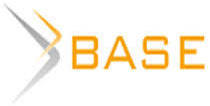DOI:
10.18413/2408-932X-2015-1-4-76-81
The article raises the question of consideration of the specifics of valuable cultural grounds on the basis of the analysis of visual perception, combined with the philosophical understanding of the selected categories. The author refers to the visual component of folk culture, expressed in ethnic and cultural archetypes and used in regional embroidery materials, including textiles collected by the funds of Belgorod State Museum of Folk Culture. Through the selected graphic material, the author draws parallels between the symbols and the higher triads of universal values allocated by Rickert. The study, in particular, is based on the concept of G. Deleuze, who presented the process of knowing the truth as the everyday experience of decoding signs whose top hierarchy is represented by works of art. The unity of the material and the spiritual meaning of the sign, typical of any work of art, is peculiar to the traditional language of folk art and culture which has long been an expresser of a certain indicator of its «common place». In terms of the «visual turn» in the XXI century, according to the author, the use of this technique opens new prospects for a full inclusion of ethnoart experience in creative and existential everyday human life.
Keywords: culture,
tradition,
values,
art experience,
visual turn,
ethno-cultural archetypes,
ethno-art experience.
Number of views: 6211 (view statistics)
Количество скачиваний: 10493
All journals
Send article
Research Result. Social Studies and Humanities is included in the scientific database of the RINTs (license agreement No. 765-12/2014 dated 08.12.2014).
The journal is included in the list of peer-reviewed scientific publications recommended by the Higher Attestation Commission (as of 25.12.2020 (№ 1590)). vak.minobrnauki.gov.ru

















While nobody left any comments to this publication.
You can be first.